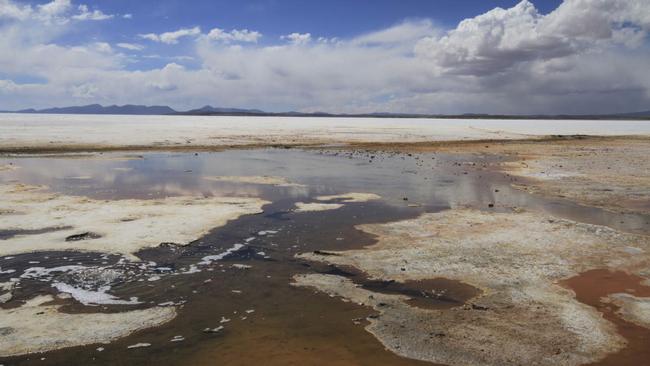Bolivian lithium brines emerging from the shadows cast by Chile and Argentina
Chile and Argentina have long dominated news from the Lithium Triangle, but direct lithium extraction could provide the key for Bolivia to join its neighbours.

Stockhead
Don't miss out on the headlines from Stockhead. Followed categories will be added to My News.
Bolivia’s salars are estimated to host about 22% of the world’s known lithium resources
Lithium brines in the country saddled with high levels of magnesium that make it expensive to process
Cosmos Exploration is counting on A-DLE technology developed by Vulcan Energy to overcome this hurdle
The famed Lithium Triangle encompasses parts of Chile, Argentina and Bolivia and supplies the majority of the world’s lithium and hosts the lion’s share of identified reserves.
This lithium is contained within salt lakes (salars) that host mineral-rich brines that have to be pumped up to surface and traditionally left in evaporation ponds to be concentrated with reagents before being processed.
These are globally significant due to their exceptional lithium enrichment that is due to a combination of geological, climatic, basin morphology and hydrological factors that create ideal conditions for lithium concentration.
However, while Bolivia’s salars are estimated by the US Geological Survey to host an estimated 23Mt of contained lithium, about 22% of the world’s known lithium resources, most of the attention has been monopolised by Chile and Argentina.
Chile is the second largest producer of lithium after Australia, while companies have snapped up, grown and carried out extensive work in Argentina.
So why has Bolivia fallen by the wayside?
Magnesium malaise
For starters, the Bolivian salars are higher in altitude and wetter than those in Chile, meaning that the extraction process takes longer and costs more as the cooler temperatures reduce the evaporation rate and seasonal rainfall exacerbates this.
But Cosmos Exploration (ASX:C1X) executive chairman Jeremy Robinson told Stockhead the foremost reason was the relatively high magnesium content of the Bolivian brines.
As an example, the giant Salar de Uyuni – the largest lithium-bearing salt lake in the world – has an extremely high magnesium to lithium ratio of 19:1, above the 6:1 found at Chile’s Salar de Atacama and 1:1 at Argentina’s Hombre Muerto salar.
This magnesium has to be removed by adding slaked lime before the concentrated brine can be processed, a requirement that adds further costs to the process.
A common industry axiom says that the ratio needs to be below 10:1 to remain economical.
“That's why we need direct lithium extraction technology,” Robinson added.
Counting on DLE
Adsorption-type Direct Lithium Extraction (A-DLE) uses physical processes, optimised by heat and salinity gradients, to selectively extract lithium from brines while minimising water loss and environmental impact.
DLE extraction does require significant upfront investment and energy input but can achieve lithium extraction in just hours or days – rather than weeks or months with higher recoveries.
Cosmos itself is counting on A-DLE.
In December last year, the company signed an exclusive option agreement to acquire EAU Lithium, a private lithium development company, part owned by Vulcan Energy Resources (ASX:VUL), with a technology-testing agreement with Bolivian state-owned company Yacimientos de Litio Bolivianos (YLB).
This agreement, which also leverages EAU’s technology partnership with Vulcan, enables EAU to test lithium brines from Salar de Coipasa, Salar de Empexa and Salar de Pastos Grandes salars – some of the largest salars in the country.
While recognised for their high lithium, high magnesium brine chemistry, these salars remain largely undeveloped and have seen less work than the more widely studied Salar de Uyuni.
Despite this, they offer compelling opportunities for the evaluation of advanced lithium extraction technologies with the region benefitting from existing road infrastructure and access to export routes via nearby Chilean ports.
“We've purchased an option to acquire EAU lithium and EAU Lithium has a test work agreement whereby it has to prove that the Vulcan A-DLE technology can recover the lithium from the lithium brine in Bolivia,” Robinson said.
VULSORB is Vulcan’s proprietary alumina-based sorbent that has demonstrated higher performance and lower water consumption for lithium extraction compared to commercially available sorbents.
Cosmos had previously flagged that the entire process could take six to nine months.
At Stockhead, we tell it like it is. While Cosmos Exploratiion is a Stockhead advertiser, it did not sponsor this article.
Originally published as Bolivian lithium brines emerging from the shadows cast by Chile and Argentina


